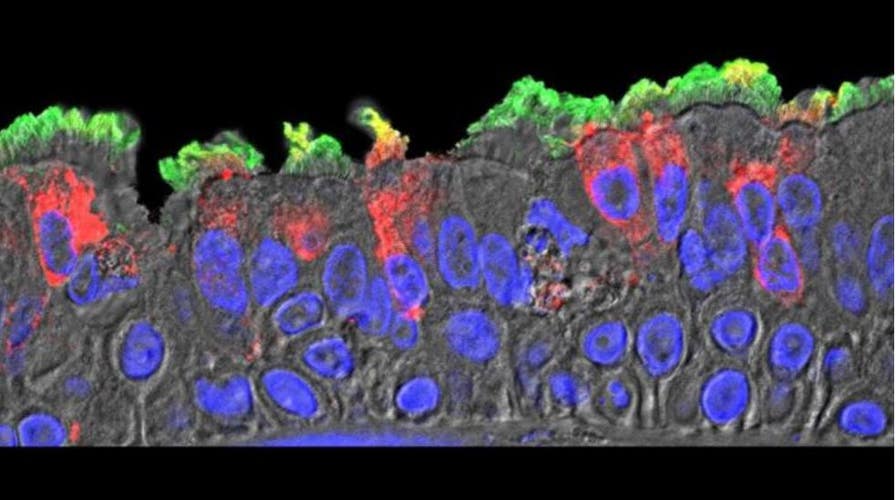Fox News Flash top headlines for June 3
Fox News Flash top headlines are here. Check out what's clicking on Foxnews.com.
Scientists have characterized the specific way SARS-CoV-2, which is the coronavirus that causes COVID-19, infects the nasal cavity to a great degree.
The new study published in the journal Cell suggests that the virus first tends to firmly establish itself in the nasal cavity, but it can then be aspirated into the lungs -- where it wreaks havoc and can lead to pneumonia.
Scientists at the UNC School of Medicine and the UNC Gillings School of Global Public Health believe their study supports the widespread wearing of masks as a way to prevent infection.
"If the nose is the dominant initial site from which lung infections are seeded, then the widespread use of masks to protect the nasal passages, as well as any therapeutic strategies that reduce virus in the nose, such as nasal irrigation or antiviral nasal sprays, could be beneficial," said study co-senior author Richard Boucher, a professor of medicine and director of the Marsico Lung Institute at the UNC School of Medicine, in a statement.
COVID-19 COULD BE SEASONAL ILLNESS THAT RETURNS AS HUMIDITY DECREASES, NEW STUDY SAYS

SARS-CoV-2 (red) infected ciliated cells in the COVID-19 patient's bronchi. (Takanori Asakura, PhD, UNC School of Medicine) (Takanori Asakura, PhD, UNC School of Medicine)
SARS-CoV-2, which first appeared in late 2019 in Wuhan, China and spread around the world, has now infected more than 6.4 million and killed 382,451. The U.S. accounts for almost one-third of the global infections and deaths.
"This is a landmark study that reveals new and unexpected insights into the mechanisms that regulate disease progression and severity following SARS-CoV-2 infection," said Ralph Baric, a professor of epidemiology at the UNC Gillings School of Public Health. "In addition, we describe a new reverse genetic platform for SARS-CoV-2 allowing us to produce key indicator viruses that will support national vaccine efforts designed to control the spread and severity of this terrible disease."
SOME SCIENTISTS FEAR 'SUPERSPREADERS' MAY PROMPT NEW COVID-19 OUTBREAKS AS STATES REOPEN
Scientists were hoping to gain a stronger understanding of which cells in the airways the virus infects and how it gets into patients' lungs when they develop pneumonia.
Researchers used different isolates of SARS-CoV-2 to see how efficiently they could infect cultured cells from different parts of the human airway for one of the study's experiments. They discovered a pattern of continuous variation, or gradient, from a relatively high infectivity of SARS-CoV-2 in cells lining the nasal passages, to less infectivity in cells lining the throat and bronchia, to relatively low infectivity in lung cells.
The scientists also found that ACE2, the cell surface receptor that the virus uses to get into cells, was more abundant on nasal-lining cells and less abundant on the surface of lower airway cells. This difference could explain, at least in part, why upper airway nasal-lining cells were more susceptible to infection.
The hypothesis that aspiration of oral contents into the lung is a strong contributor to COVID-19 pneumonia is consistent with observations that people at higher risk for severe lung disease -- the elderly, obese, and diabetic -- are more prone to aspiration (the process of drawing breath), especially at night.
